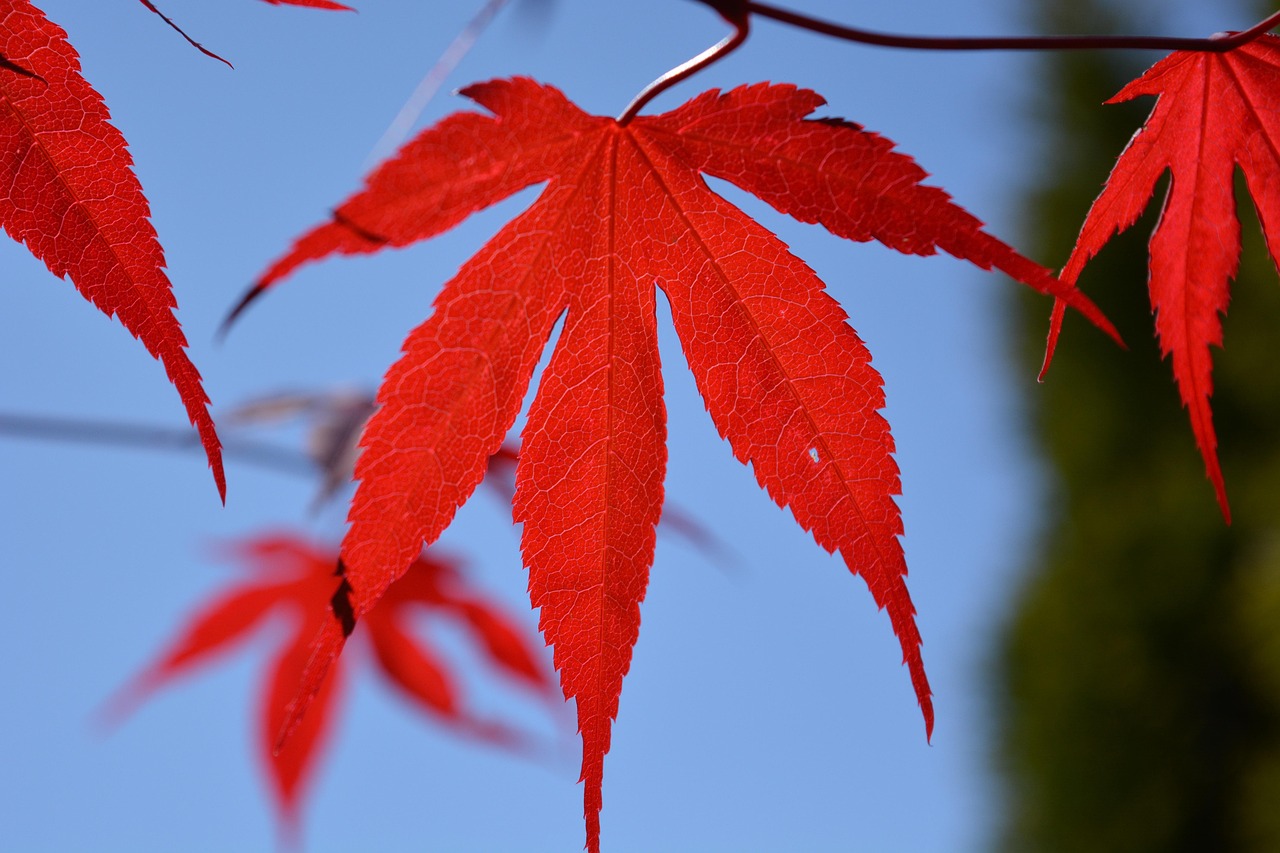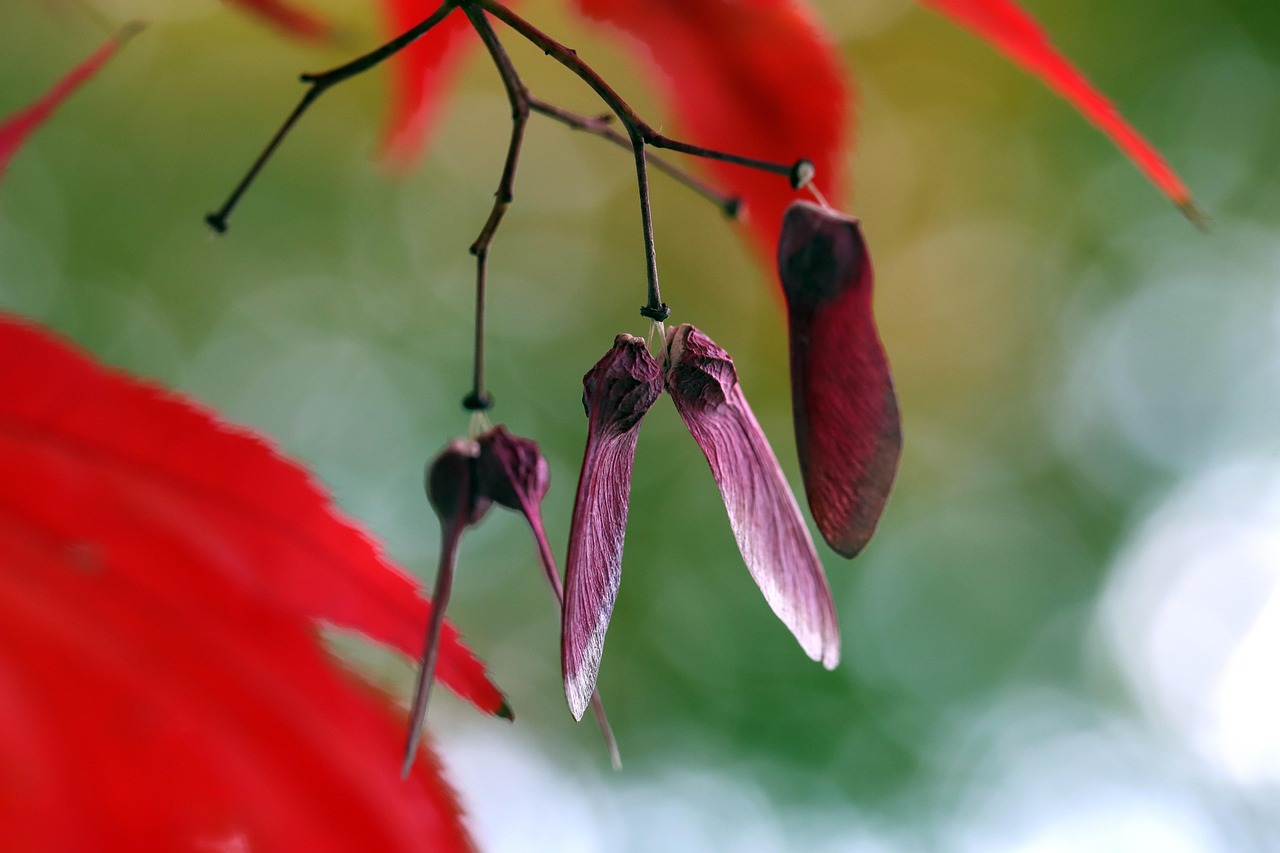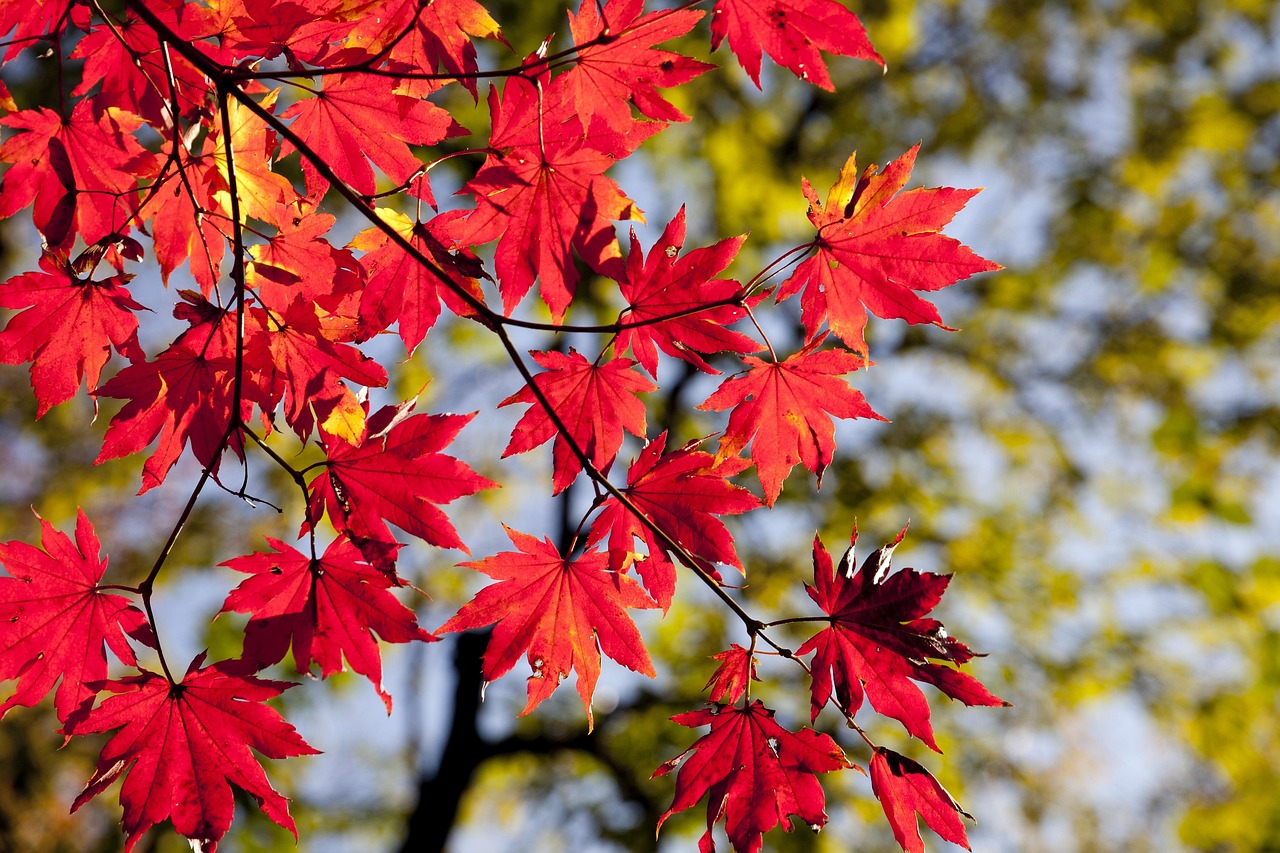Red Maples grow rapidly, reaching 2-3 feet annually with proper care. Ensuring optimal soil, hydration, sunlight, and pruning promotes healthy development. Regular monitoring for pests and diseases, along with seasonal maintenance, helps maximize growth, enhance vibrant fall colors, and ensure the longevity of your Red Maple tree in any landscape.
The Red Maple tree, scientifically known as Acer rubrum, is a popular choice among homeowners and landscapers. Its striking foliage, which transforms from green to brilliant shades of red and orange in the fall, makes it an attractive addition to various landscapes. This tree is also highly adaptable, thriving in diverse soil types and climates across the United States. Understanding the growth rate and care requirements of the Red Maple can help ensure its longevity and beauty in your yard.

One of the key advantages of planting a Red Maple is its fast growth rate. In ideal conditions, these trees can reach heights of 40 to 60 feet with a spread of 30 to 50 feet. Their ability to grow quickly allows them to provide shade and visual appeal relatively soon after planting. However, several factors influence their growth rate, including soil quality, water availability, and sunlight exposure.
Growth Rate Factors
Several factors play a crucial role in determining how quickly a Red Maple tree will grow. Understanding these factors can help you create an environment that supports healthy growth.
- Soil Type: Red Maples prefer moist, well-drained soils rich in organic matter. They thrive in loamy or sandy soils but can tolerate clay soils as well.
- Water Availability: Regular watering is essential, especially during dry spells. Young trees require more water as their root systems establish.
- Sunlight: Red Maples flourish in full sun to partial shade. Ideally, they should receive at least 6 hours of direct sunlight daily.
- Temperature: These trees are hardy in USDA zones 3 to 9, meaning they can withstand a range of temperatures but prefer mild climates.
- Fertilization: Applying a balanced fertilizer during the early spring can encourage faster growth and improve overall health.
By addressing these factors, you can help your Red Maple achieve its potential growth rate. It is essential to monitor the tree’s health and adjust care practices accordingly. Additionally, pests and diseases can affect growth rates and overall vitality. Thus, regular inspections are vital.

Pro-Tips and Mistakes to Avoid
- When I first planted my Red Maple, I underestimated the importance of site selection. Always choose a spot with plenty of space for growth and good drainage to prevent root rot later on.
- Early on, I thought that watering daily was necessary, but I learned that deep, infrequent watering encourages stronger roots. Remember, deep watering once a week is usually enough once the tree is established.
- Initially, I pruned my tree heavily in the first year, thinking it would help shape it. I realized that over-pruning stressed the tree and limited its growth. Prune only dead or diseased branches and shape lightly during late winter or early spring.
- When I ignored soil pH, I faced slower growth. Conducting a soil test and adjusting pH if needed can make a big difference in how well your Red Maple thrives.
- I used chemical fertilizers excessively, which caused lush foliage but weak roots. I now prefer balanced, organic fertilization and avoid over-fertilizing to promote overall health.
- During the fall, I used to neglect leaf cleanup, which led to fungal issues. Raking leaves and removing debris helps prevent pests and diseases overwintering in your yard.
- Underestimating the importance of seasonal care, I skipped mulching in summer. Proper mulching maintains soil moisture and temperature, protecting roots during extreme heat.
- Finally, I learned to be patient. Red Maples grow fast but need consistent care. Rushing pruning or fertilizing can do more harm than good. Consistency and attention to detail are key to healthy growth.
Common Pests and Diseases
Like other trees, Red Maples can be susceptible to various pests and diseases. Being aware of these threats can aid in early detection and management.
| Pest/Disease | Symptoms | Treatment |
|---|---|---|
| Maple Leaf Cutter | Leaves with holes or cut edges | Insecticidal soap or natural predators |
| Scale Insects | Sticky residue on leaves; yellowing leaves | Horticultural oil or neem oil |
| Verticillium Wilt | Wilting branches; leaf discoloration | No cure; remove affected branches |
Regular vigilance can help protect your Red Maple from these issues. Early intervention is critical for maintaining the tree’s health and promoting continued growth.
Caring for a Red Maple requires commitment but can lead to rewarding results. With proper conditions and care, you can enjoy the beauty of this tree for generations to come. By focusing on its growth rate and understanding the necessary care tips, you can create a thriving environment for your Red Maple tree.

Optimal Conditions for Red Maple Growth
Creating the right environment for your Red Maple tree is essential for promoting healthy growth. This section will explore the optimal conditions that support vigorous growth and longevity.
Soil Requirements
The soil in which a Red Maple grows significantly impacts its health and growth rate. Here are some key factors to consider:
- pH Level: Red Maples prefer slightly acidic to neutral soil, with a pH level between 5.5 and 7.0. Conducting a soil test can determine the current pH.
- Organic Matter: Incorporating compost or well-rotted manure can improve soil structure and fertility. This helps retain moisture while providing essential nutrients.
- Drainage: While Red Maples enjoy moisture, they do not thrive in overly saturated soil. Ensure proper drainage to prevent root rot.
Watering Practices
Watering is crucial for the establishment and growth of Red Maple trees, especially in the early years. Proper watering practices are essential for optimal growth:

- Frequency: Newly planted saplings should be watered deeply once a week during dry periods. As they grow, reduce the frequency, but ensure deep watering occasionally.
- Method: Use a soaker hose or drip irrigation systems to deliver water directly to the root zone, minimizing evaporation and runoff.
- Signs of Underwatering: Wilting leaves or leaf drop can indicate insufficient water, while yellowing leaves may suggest overwatering.
Sunlight Exposure
Sunlight plays a vital role in the overall health of Red Maple trees. Adequate light exposure is necessary for optimum growth:
- Full Sun Conditions: Red Maples thrive best in full sun, receiving at least 6 hours of direct sunlight each day.
- Partial Shade: While they can tolerate some shade, limited sunlight may result in slower growth and reduced fall color vibrancy.
- Protection from Wind: Young trees may benefit from windbreaks to protect them from strong winds that can damage branches and hinder growth.
Pruning Techniques
Pruning is an essential part of maintaining the health and shape of your Red Maple tree. Proper pruning techniques can promote better airflow and light penetration into the canopy:
When to Prune
The best time to prune a Red Maple is during late winter or early spring before new growth begins. This timing minimizes stress on the tree and allows it to heal quickly.
How to Prune
- Remove Dead or Diseased Branches: Inspect the tree regularly and remove any branches that show signs of disease or damage.
- Thin Out Crowded Areas: Remove branches that cross one another or crowd the center of the tree. This encourages better air circulation.
- Shape the Tree: Trim for shape, ensuring that the tree maintains a balanced appearance without over-pruning, which can stress the tree.
Nutrient Management
Providing the right nutrients helps ensure that your Red Maple grows strong and healthy. Here are some tips for effective nutrient management:
- Fertilization Schedule: Fertilize in early spring as new growth begins. A balanced fertilizer with equal parts nitrogen, phosphorus, and potassium is ideal.
- Organic Amendments: Adding organic matter like compost can enhance soil nutrients and improve overall soil health.
- Avoid Over-Fertilization: Too much fertilizer can lead to excessive foliage growth at the expense of root development and overall tree health.
By understanding and implementing these optimal conditions, you can significantly enhance the growth rate and vitality of your Red Maple tree. Proper care, including attention to soil, water, sunlight, pruning, and nutrients, can help your tree flourish in your landscape.
Seasonal Care for Red Maple Trees
Caring for your Red Maple tree throughout the changing seasons is essential for its health and growth. Each season brings unique challenges and opportunities for maintenance. Understanding these seasonal needs will help you provide the best care possible.
Spring Care
Spring is a vital time for Red Maples as they emerge from dormancy. This season requires careful attention to several key areas:
- Inspection: Check for any winter damage, such as broken branches or signs of disease. Prune these away promptly.
- Fertilization: Apply a balanced fertilizer to support new growth. This helps the tree establish a strong foundation for the growing season.
- Watering: As temperatures rise, ensure that the tree receives adequate moisture, especially if rainfall is insufficient.
Summer Care
During the summer months, maintaining proper hydration and protecting your tree from stress is crucial. Here are some summer care tips:
- Watering: Continue deep watering once a week if needed, particularly during dry spells. Monitor soil moisture levels regularly.
- Mulching: Apply a 2-3 inch layer of mulch around the base of the tree to conserve moisture, regulate soil temperature, and suppress weeds.
- Pest Monitoring: Keep an eye out for pests such as aphids and scale insects. Early treatment can prevent infestations from becoming severe.
Fall Care
As fall approaches, the vibrant colors of the Red Maple signal a change in care requirements. This is an important time for preparation:
- Leaf Cleanup: Rake fallen leaves to prevent fungal diseases and pests from overwintering in your yard.
- Watering: Water the tree well before the ground freezes. This helps ensure that the roots are adequately hydrated going into winter.
- Fertilization: A light application of fertilizer in early fall can support root development without promoting excessive top growth late in the season.
Winter Care
Winter poses unique challenges for Red Maple trees. Proper winter care can protect your tree during colder months:
- Protection from Cold: Young trees may benefit from protective wraps or burlap to shield them from harsh winds and freezing temperatures.
- Irrigation: If there’s a dry spell during winter, consider watering the tree if conditions allow, especially if the ground is not frozen.
- Pest Management: Inspect for any signs of pests or disease that may have persisted through the winter. Early intervention can mitigate long-term effects.
Common Misconceptions About Red Maple Trees
There are several misconceptions regarding Red Maple trees that can lead to improper care. Understanding these myths can help homeowners better manage their trees:
- Myth 1: Red Maples Are Invasive. While Red Maples can spread through seed dispersal, they are not classified as invasive in most regions. They can be managed effectively with regular pruning.
- Myth 2: All Red Maples Have Red Leaves. The name “Red Maple” refers to its fall color. In spring and summer, leaves are often green.
- Myth 3: Red Maples Require Constant Moisture. While they prefer moist conditions, they can adapt to drier soils once established.
Choosing the Right Location
Selecting the right spot for planting a Red Maple is crucial for its growth and health. Consider the following factors when choosing a location:
- Space Requirements: Ensure there is enough room for the tree to spread its branches and roots without interference from structures or other plants.
- Avoiding Compacted Soil: Plant in an area with loose, well-aerated soil to encourage root growth and prevent waterlogging.
- Proximity to Other Trees: Avoid planting too close to other trees that may compete for nutrients and sunlight.
By focusing on seasonal care, debunking common myths, and choosing the right location, you can significantly enhance the growth and overall health of your Red Maple tree. These considerations will help ensure that your tree thrives throughout its life cycle.
Additional Considerations for Red Maple Care
In addition to the previously discussed care tips and insights, there are several other considerations that can enhance the health and longevity of your Red Maple tree. These factors ensure that your tree not only grows well but also remains vibrant and resilient throughout its life.
Climate Considerations
Understanding your local climate can greatly influence how you care for your Red Maple tree. Here are some aspects to consider:
- Temperature Extremes: While Red Maples are hardy, extreme temperatures can stress the tree. In areas with harsh winters, consider selecting a variety that is more tolerant of cold.
- Humidity Levels: Red Maples generally prefer moderate humidity. If you live in a particularly dry area, additional watering may be necessary to mimic their preferred environment.
- Frost Dates: Be aware of local frost dates. Young trees are particularly vulnerable to late frosts, which can damage new leaves and buds.
Mulching Techniques
Proper mulching is vital for maintaining soil health and moisture retention around your Red Maple tree. Consider the following guidelines for effective mulching:
- Material Choices: Use organic mulch materials such as wood chips, bark, or straw. These not only conserve moisture but also decompose over time, enriching the soil.
- Application Depth: Apply mulch to a depth of 2-3 inches around the base of the tree, avoiding direct contact with the trunk to prevent rot.
- Replenishment: Regularly replenish the mulch layer as it decomposes to maintain its benefits throughout the growing season.
Companion Planting
Choosing the right companion plants can benefit your Red Maple by improving soil health and attracting beneficial insects. Some great companion options include:
- Perennials: Plants such as hostas and ferns can thrive in the shade of a Red Maple, creating a beautiful underplanting.
- Ground Covers: Low-growing ground covers like creeping thyme or ajuga can help suppress weeds while enhancing soil moisture retention.
- Pollinator-Friendly Plants: Consider adding flowering plants that attract pollinators, such as bee balm or coneflower, to promote biodiversity in your garden.
Final Thoughts
Caring for a Red Maple tree involves understanding its specific needs and environmental preferences. By providing optimal conditions regarding soil, water, sunlight, and nutrients, you can foster rapid growth and vibrant foliage. Seasonal care, proper pruning techniques, and awareness of pests and diseases are essential aspects of maintaining a healthy tree.
The adaptability of Red Maples makes them a valuable addition to many landscapes, but attention to detail is key. Factors like climate, mulching practices, and companion planting can further enhance their growth and resilience. With proper care and attention, your Red Maple can thrive for many years, providing beauty and shade to your outdoor space.
Whether you are planting a young sapling or caring for a mature tree, the insights shared in this article will guide you in nurturing a robust Red Maple that enriches your landscape. Embrace the journey of tree care and enjoy the many rewards that come with cultivating this beautiful species.
